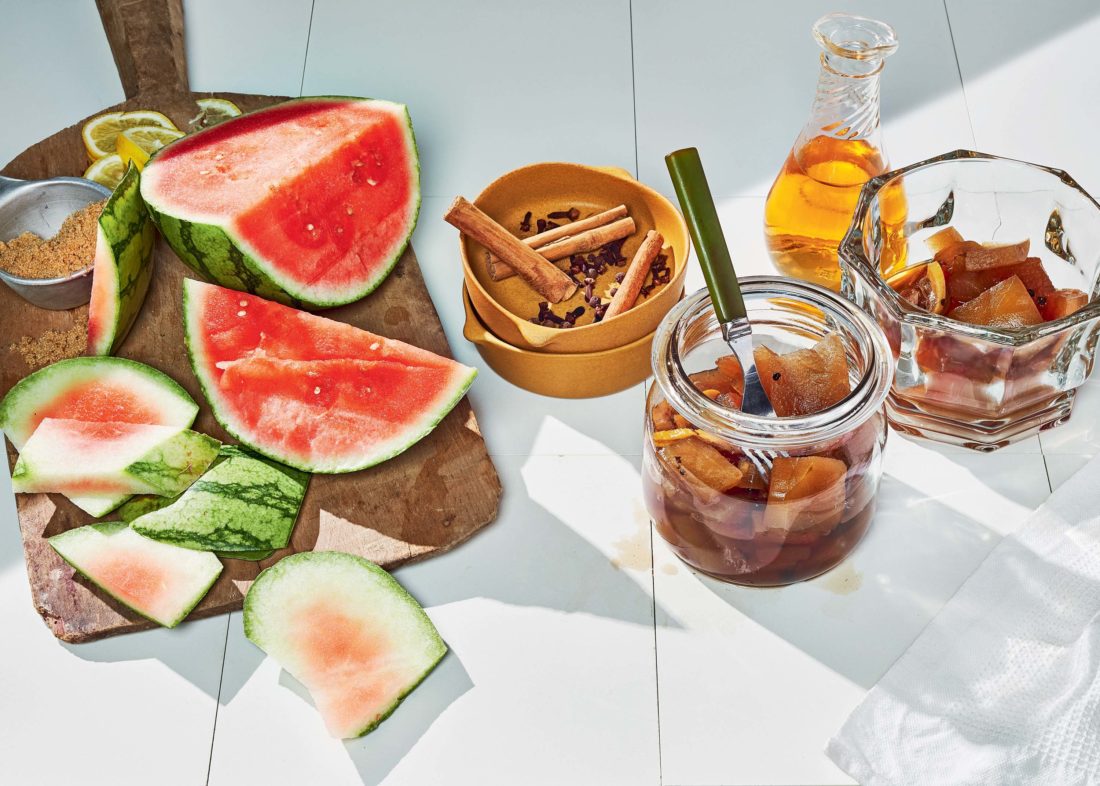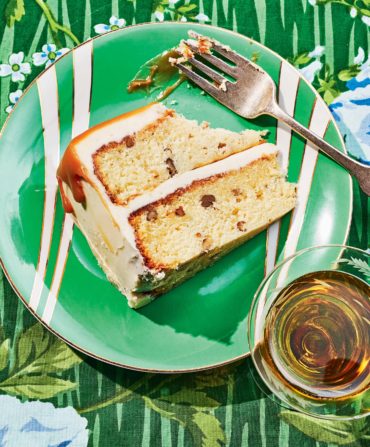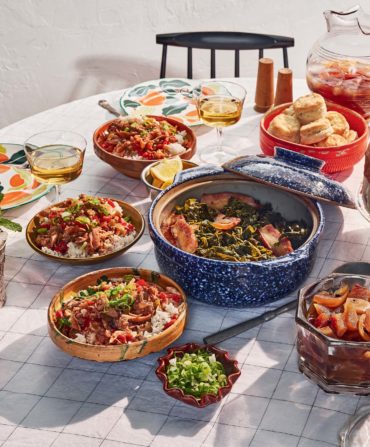They were an annual treat that made their appearance in a cut crystal dish next to the celery hearts, colossal pimento-stuffed olives, and carrot sticks. They only showed up briefly for Thanksgiving dinner, and I waited patiently to savor their spicy sweetness all year long. I would later learn that watermelon rind pickles represent the best of Southern frugality, taking what would otherwise be discarded and transforming it into something tasty—in this case into the star of a relish tray, or bacon wrapped and broiled for a sweet and savory hors d’oeuvre, or coupled with thinly sliced ham in a biscuit or with a few slices of roast pork. Although the pickles disappeared from my life after my maternal grandmother’s death, I loved them even more in memory, factoring in the knowledge that they were hand prepared from a Virginia recipe she never shared with her daughters and that went with her to the grave.
Watermelon rind pickles have been in the African American culinary lexicon for more than a century, and a version appeared in What Mrs. Fisher Knows about Old Southern Cooking, the second known African American cookbook, published in 1881. Post-Emancipation, the book’s author, Abby Fisher, made her way from Alabama to California, where she is listed in the 1882 San Francisco City Directory as a pickle manufacturer. More recently, the pickles became a means of survival. Patsy Randolph, an African American entrepreneur in Harlem during the Great Depression, collected watermelon rinds from street vendors and transformed them into pickles that she sold along with pepper sauces and relishes. The pickles were her biggest sellers.
Haunted by my childhood delight, I set out to re-create my grandmother’s pickles and came up with a recipe that while not exactly replicating hers, comes closer in taste than any of the commercial brands I’ve tried, which trade a complex spice-infused flavor for sugary sweetness. Though I prepare them infrequently, they’re one of the first items that I think of for special meals for their ability to evoke the taste of memory.
This article appears in the August/September 2020 issue of Garden & Gun. Start your subscription here or give a gift subscription here.








